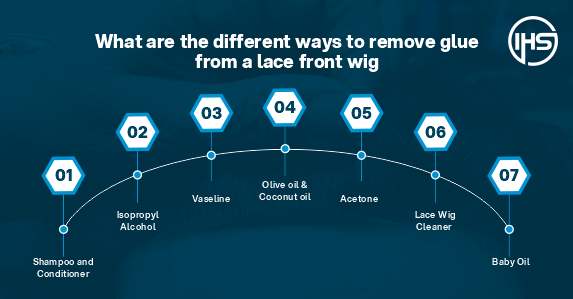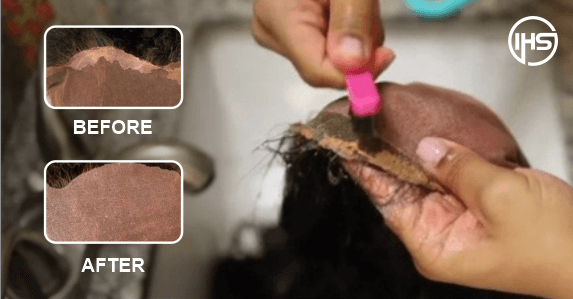



Contact our specialists now for Hair Replacement!

Lace-front wigs are becoming popular everywhere, but let’s be real—the removal process can be tricky.
Lace-front men’s & women’s wigs have become dominant because they instantly offer a soft, natural hairline. But the struggle with stubborn adhesive is all too real.
Many wig wearers struggle with glue that won’t budge, leading to frustration and potential damage to the lace. As one expert quoted, “If only removing glue was as easy as applying it!” The truth is that improper removal can lead to tears in the lace or even hair loss, making it essential to master this skill.
We are here to provide you with the ultimate guide on how to remove glue from a lace front wig without damaging your precious wig. Get ready to say goodbye to sticky situations.
Lace front wigs have been a game-changer. They’ve completely transformed the hairpiece world with their ability to create an incredibly natural-looking, practically invisible hairline. Let us see what more it has to offer;
A lace-front wig is a type of wig that consists of sheer lace material at the front, where individual hairs are hand-tied to create a natural-looking hairline.
This design allows the wig to blend effortlessly with your skin, giving the illusion that hair is growing from the scalp itself, which is essential to keep a wig on the head.
Conversely, celebrities like Maya Jama and Jodie Comer have embraced lace-front wigs, showcasing their versatility and style on various platforms.

Lace front wigs are made by hand-tying individual strands of hair to a sheer lace base, which creates a natural-looking hairline.
This process involves using a special tool called a “ventilating needle” to secure the hair strands into the lace, allowing for a smooth & natural blend with the wearer’s scalp.
The lace front typically extends from ear to ear, providing the illusion that hair is growing directly from the scalp.
Creating a lace-front wig is a long process that takes 12 to 30 hours to complete.
Again, this timeframe can change significantly based on many factors, including the complexity of the design, the type of hair used, and the skill level of the wig maker.
Use it in a very small amount and consider this method your last resort. Apply the acetone to the cotton pad, but be prepared to wash the wig thoroughly afterwards.
Caution: Acetone is strong and can damage the lace.
Tip: Always test any product on a small, inconspicuous area of the wig before applying it to the entire lace. Remember, patience is the key!
The more you care for your wig, the more confident you’ll feel wearing it. So, gather the perfect knowledge on which method works best, examine the advantages and disadvantages of each method, and make the process enjoyable!
If you ever need expert guidance on how to care for your wig properly, look no further than IHS in London.

IHS Hair Replacement is a hair replacement brand based in 2 prime locations, West Kensington in West London and Liverpool Street in Central London. We provide a full head of hair achieved through our hair integration procedure giving you confidence and life.